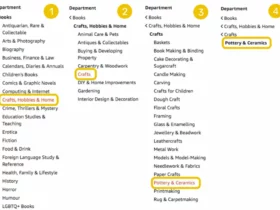The rise of virtual communication has brought about numerous challenges for individuals and businesses alike. As we continue to navigate through this new way of communicating, it’s important to recognize the obstacles that arise and find effective ways to overcome them. From technical difficulties to misinterpretations, the world of virtual communication can be a tough nut to crack. But fear not, because, in this blog post, we’ll explore 6 tips that will help you conquer these challenges with ease and elevate your virtual communication game. Whether you’re working remotely or staying connected with loved ones from afar, these tips will provide valuable insight on how to effectively communicate virtually while maintaining professionalism and authenticity. So grab your favorite beverage and get ready to enhance your virtual communication skills!
- Set a designated workspace
With technology making remote work more accessible, it has become easier to work from literally anywhere. However, while this flexibility can be liberating, working from your bed or from the couch can be counterproductive. To boost your productivity and decrease distractions, setting up a designated workspace is crucial. This could be a specific room, a desk, or even a corner of a room. Having a workspace that is conducive to your productivity helps to create a defined work environment that will tell your brain it is time to get down to business. By doing this, you are able to keep your mind focused on the task at hand, helping you to get your work done faster and more efficiently.
- Utilize video calls for face-to-face interactions
In today’s digital age, it’s becoming increasingly important to utilize video calls as a means of building relationships and maintaining face-to-face interactions. Gone are the days when we had to rely solely on phone calls and emails to connect with people who were far away. With the help of video calling, we can actually see and hear the people we’re communicating with, which creates a more meaningful connection. Whether it’s catching up with friends and family across the globe or conducting business meetings with colleagues who are out of town, video calls provide us with a platform to build and strengthen relationships. So why not take advantage of this technology and make use of it in your personal and professional life?
- Practice effective communication and avoid misunderstandings
In this era of virtual communication, the importance of practicing effective communication cannot be overstated. Misunderstandings can easily occur due to the absence of physical cues and body language, often leading to confusion and inefficiency. Therefore, it’s crucial to be clear, concise, and unambiguous in your communication. Successful virtual communication relies heavily on your ability to influence any virtual audience positively, and this is where virtual communication training can make a significant difference. This training can equip you with the skills to effectively engage your audience, promote participation, and ensure your message is clearly understood, making every virtual interaction fruitful and impactful. Always make sure to articulate your thoughts effectively, avoid using jargon or technical terms without explanation, and always clarify your points when necessary. It’s also advisable to use active listening strategies, such as paraphrasing and summarizing the speaker’s points to show understanding and engagement. Equally important is the need to be patient and considerate, acknowledging that others may have different communication styles or technology proficiencies. By practicing these principles, you can avoid misunderstandings and ensure clear and effective virtual communication.
- Be mindful of time zones when scheduling virtual meetings
In this era of remote work, scheduling virtual meetings has become a routine task that requires careful consideration of time zones. It can be tricky to navigate time differences, especially if you’re dealing with people from all over the world. A poorly scheduled meeting can not only lead to frustration and confusion but also hinder productivity and teamwork. Implementing good time management practices such as setting clear expectations and planning ahead can significantly minimize the risks of scheduling mishaps. By embracing a mindful approach, you can make sure your virtual meetings run smoothly and achieve your desired outcomes.
- Take advantage of virtual communication tools
With the rise of remote work, virtual communication tools have become more important than ever. Screen sharing and virtual whiteboards are two examples of tools that can help bridge the gap between colleagues who may be physically distant. Screen sharing allows for easy collaboration by allowing multiple people to view the same document or presentation in real-time. Virtual whiteboards are particularly useful for brainstorming sessions as they allow participants to share ideas and draw out their thoughts in a way that mimics an in-person meeting. By taking advantage of these tools, remote work can feel less isolating and more productive.
- Create a structured agenda beforehand
With an increasing number of companies adopting remote work, virtual meetings have become the norm. While these meetings can be just as productive as in-person meetings, they can also become chaotic. Interruptions, distractions, and technical difficulties can quickly derail the meeting and waste everyone’s time. This is why creating a structured agenda beforehand is crucial. A well-planned agenda ensures that everyone knows what to expect, which topics will be discussed, and how much time will be allocated to each topic. Additionally, it keeps the meeting focused and prevents it from straying off-topic. By having a clear and concise agenda, virtual meetings can become just as effective (if not more so) than traditional, in-person meetings.

The challenges that come with virtual communication can be formidable, but they are not insurmountable. With careful planning, mindful practices, effective communication techniques, and the right technological tools, we can efficiently navigate the complex landscape of remote interaction. While it may require a certain level of adaptation and patience, the advantages of being able to connect with anyone, anywhere, and at any time far outweigh the obstacles. As we continue to embrace this new normal, let’s use these tips as a roadmap to enhance our virtual communication skills, fostering stronger connections, and nurturing productivity in our personal and professional lives. By investing time and effort into improving our virtual communication abilities, we open doors to new opportunities, expand our networks, and cultivate meaningful relationships in the digital realm. Let’s seize the potential of virtual communication and unlock the power of connection in this evolving era of remote collaboration.













